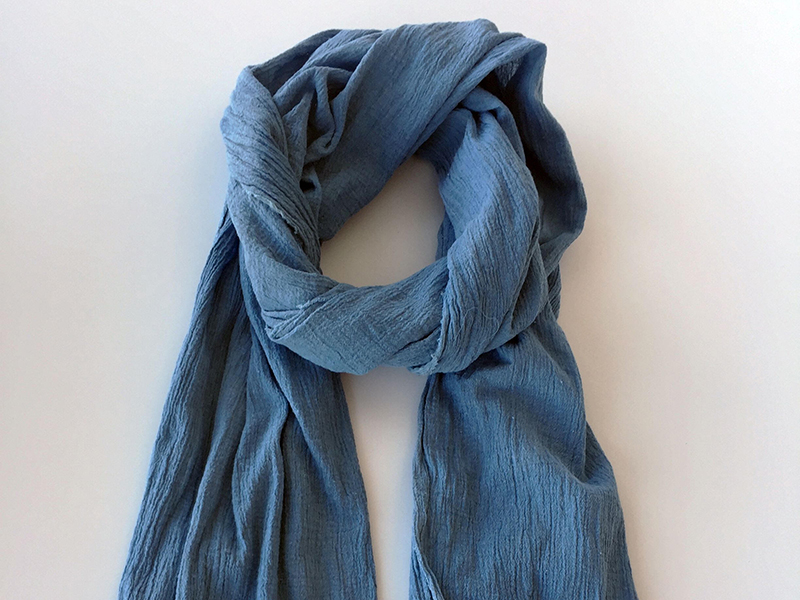Researchers at the University of California, Berkeley are trying to make the process of making blue jeans greener, by engineering bacteria to produce the indigo dye responsible for jeans’ characteristic hue.
“Indigo dying for denim is unfortunately a pretty dirty process,” says John Dueber, a professor of bioengineering who co-led the research, recently published in the journal Nature Chemical Biology.
The vast majority of jeans are dyed with synthetically produced indigo, which imitates the color of the dye extracted from the Indigofera plant. Synthesizing indigo dye requires a number of toxic chemicals, including formaldehyde, as does the dying process itself. This creates an enormous amount of pollution; in some parts of the world, rivers near denim mills run blue, contaminating and killing fish and affecting the health of workers and residents. With more than 40,000 tons of indigo produced each year, this is a significant problem.
Dueber and his team wanted to create an indigo that requires fewer chemicals to synthesize, and doesn’t need to have as many chemicals added to it during the dying process.
“In order to do that, we took inspiration from how plants actually naturally synthesize indigo,” Dueber says.
The team engineered a strain of E. coli bacteria to be a chemical factory for producing an indigo precursor. The precursor is stable and can be stored until needed. Unlike traditional synthetic indigo, which requires chemical treatment to reduce and solubilize the indigo so it can crystalize in the cotton fiber, the E. coli-produced precursor only needs the addition of an enzyme. The final result is “identical” to traditional synthetic indigo dying, Dueber says.
There are two main challenges that must be overcome before bacteria-produced indigo is ready for the mass market, Dueber says. The first challenge is that indigo dying is most efficient at a high pH – most denim mills use a pH of around 10.5. But the enzyme used in Dueber’s team’s process only works to a pH of 8. So the team is working on manipulating the enzyme to function at a higher pH. The second challenge is scaling up.
“We feel pretty confident that we could scale the process to larger volumes,” Dueber says. “But there’s always work to be done going from the lab scale to an industrial scale.”
Dueber estimates the bacteria-produced indigo could be used in small-scale designer jean manufacture in just a few years. Better processes are needed quickly, he says.
“Many of the countries [that produce denim] are starting to think about their environmental regulations, and it’s likely that there will be more pressure in those places to redo the process,” he says.
Peter Hauser, a retired professor of textile engineering at North Carolina State University who studied indigo, agrees, but says technologies like Dueber’s can’t fix the whole problem.
Hauser says a large amount of the pollution in denim manufacture is caused by rinsing the denim after it’s dyed and abrading it to get the desired worn-in look. Denim dyed with bacteria-produced indigo would still produce dirty wastewater by being washed, Hauser says.
“[Bacteria-produced indigo] is not going to be any less polluting once it gets to the yarn,” Hauser says.
Some eco-minded manufacturers are returning to natural indigo dye, which needs fewer chemicals but has long been eschewed for cost and scale reasons. In Tennessee, a company called Stony Creek Colors is encouraging farmers to grow indigo instead of tobacco, in hopes of a natural indigo revival. But even natural indigo still pollutes water when it’s rinsed off during manufacturing.
Another solution would be dying jeans without using indigo at all. Most dyes actually penetrate fabric, but indigo only sticks to the surface of the thread, which is why so much of it rinses off into the water. This is why the worn parts of jeans begin to show white. While other dyes could make denim blue, they wouldn’t wear out in this same characteristic and sought-after way.
“Indigo is actually a terrible dye,” Hauser says. “But because of that property, it fades and washes off, and that’s why people like it.”





